After learning about the twelve principles of animation last class, I began to consider how important these principles are in animated films and cartoons. The first principle, squash and stretch, plays a very important role in animated films and cartoons because it can bring a character to life. The basis of how the principle works in animation has not changed over time, but it has been used in many different ways. Squashing and stretching can be used for how the character walks, talks, interacts with its environment, and many other things .
For example, squashing and stretching can exaggerate a character’s emotions or reactions. In the Looney Tunes cartoon “The Hypo-chondri-cat” (WB, 1950), two mice, Hubie and Bertie, go up to a window and see some cheese on the kitchen table.
Here, the squashing and stretching principle is used to let Bertie have the most extreme reactions when viewing the cheese.
The principle also enables characters to respond with extreme emotions, as how Bertie reacts in extreme fear as Hubie taunts a cat:
The squash and stretch principle can also be used to exaggerate a bad circumstance, which can become funny joke. In the Tom and Jerry episode “Saltwater Tabby” (MGM, 1947), Tom is ready to go out for a swim but his bathing suit gets caught in the door:
It was bad enough that his suit got caught in the door in the first place, but unknown to him, the stretching of his suit gets him into a bigger (albeit funny) predicament.
In one more example, squashing and stretching can be used in a subtle way, as in the exaggeration of speed or “life-like” movement. During the stampede scene in film The Lion King (Disney, 1994), Mufasa is animated in a fast moving scene during his attempt to rescue Simba:
Only by slowing down the film will one see that the squash and stretch principle was used for Mufasa’s quick movements as he:
Slides under a wildebeest…
… and gets hit by a wildebeest.
The same can also be said for Scar’s jump during the scene for the song “Be prepared”:
Slowed down, it can be seen that Scar’s foot was stretched to give the illusion of speed:
Without the squash and stretch principle, it may be difficult to animate such “realistic” movements and can result with choppy movements in fast paced scenes.
The squash and stretch principle is very important as it does not only helps animation look more fluid, but has many different uses to give a character an outlet for expression and movement.
————————
Images created from private DVD collection
(1-2) Looney Tunes: Golden Collection. (Warner Home Video, 2003). DVD.
(3) Tom and Jerry’s Greastest Chases. (Warner Home Video, 2000). DVD.
(4-10) The Lion King: Special Edition. (1994; Walt Disney Video, 2003). DVD.
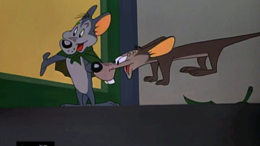
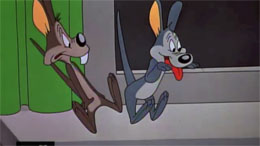
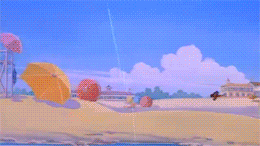
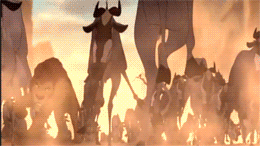
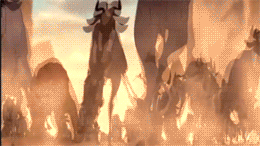
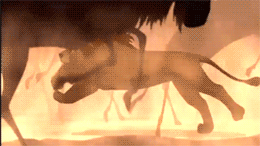
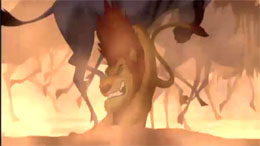

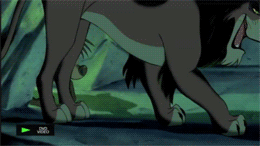

I was telling my mother about the animation class and explaining some of the principles of animation that we discussed. In order for her to understand I kept having to refer her to Wile E. Coyote and the Road Runner cartoons, which pretty much exaggerate EVERYTHING they do and have classic, but extreme, examples of everything from squash and stretch to anticipation. I see now Tom and Jerry would have worked, too. It’s also nice to see that these effects can be subtly and effectively used.
Also – your clips are excellent! Good choices and good vision for catching these examples.
I agree the squash and stretch principle is vital to all cartoons because it allows the characters to portray extreme emotion whether it is being excited or angry. All cartoonists have used it at somepoint. If someone said squash and stretch to me in referance to a cartoon I would think exaggeration, because that is purely what it is. It is an exaggeration of the characters feelings, it is the artist making sure that we understand exactly what the character is feeling.
I completely agree with this. It’s hard to imagine any cartoon that doesn’t use the squash and stretch. The lack of exaggeration would lose the cartoon’s ability to move the way they’ve always been shown and therefore lose some entertainment factor. It’s great that you’ve slowed down these clips to make the squash and stretch more obvious because in movies like the Lion King, it was so subtle.